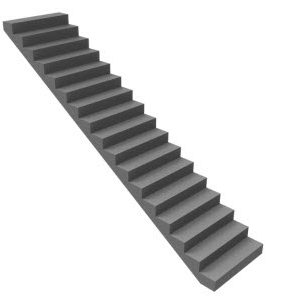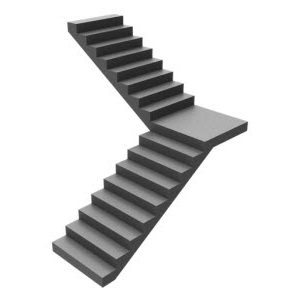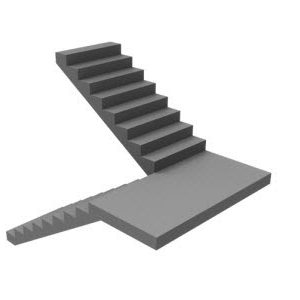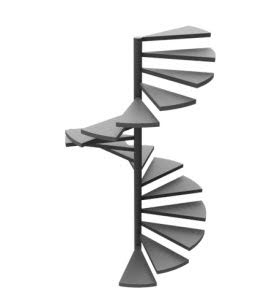



There’s a wide variety of staircases, with the most common layouts above.
Helping us to understand your stairs allows us to show you what types of Stairlift will suit your stairs.
In Order to give you the best choices of stairlifts, we need to know the measurements. If you have a minute…watch this video or simply scroll down and follow the steps given.
Its easy so bare with us…there are 4 ways we can do this…
Approx 3 Minutes – FREE OF CHARGE
The Self Survey is simply that. Follow our step by step guide and fill in the form.
When you click submit the choices of stairlift you have will appear on screen.
It only takes a few minutes. You will need a 5m Tape Measure – if you’re ready…
Lets do it… or simply call us anytime on 0857362163
How to measure for a Straight Stairlift
It really is very simple to ‘measure-up’ for your new or 2nd Hand Straight Stairlift. All you need is a good quality tape measure.
First take a general overview of your staircase layout and decide which side of the stairs the stairlift will be mounted on, when viewed from the bottom. Be aware that the stairlift rail will overhang the top landing by 8” (20cm) and meet the Floor at the foot of the stairs approximately 14” (36cm) beyond the ‘nose’ of the First step. Take note of any Fixtures, such as window sills, hand rails, central heating radiators, doorways, etc., that intrude into the stairway area – or could be blocked by the presence of the stairlift. This will help you to decide which side of the stairs will be most appropriate, requiring the least amount of disruption – or obstruction. In most cases, it’s a fairly obvious choice.
Now that you have decided which side of the stairway the stairlift will be on, you should measure the staircase.

Measurements Explained
1. Overall Length of Staircase
This should be a straight measurement from the nose of the top landing to the bottom landing – stairlift companies and engineers like to call this measurement the Point X.
2. Staircase Width
You may find that your staircase width varies a little, over the length of the stairway. Record the measurement at its narrowest point. Remember it is the available space that’s measured, if theres a banister – that becomes your narrowest point.
3. Clearance at the Bottom of Staircase
A minimum of 24” (61cm) is required at the bottom of the stairs – this ensures the stairlift can fully land properly at the bottom.
4. Clearance at the Top of Staircase
Measure the distance from the nose of the top landing to the nearest doorway or obstruction on the same side that the lift will be.
Approx 5 Minutes – FREE OF CHARGE
Virtual Survey is a combined effort. An Engineer will contact you and walk you through the process- step by step – stair by stair.
Once we are satisfied that we have what we need we can then provide you with options, prices and lead times. Ideally you will still have a 5m Measuring Tape – but that’s about it.
Lets do it… or simply call us anytime on 0857362163
REQUIRES ENGINEER VISIT – FREE OF CHARGE
Manual Survey is the most basic of our engineer visits. We can always give customers an idea of Stairlift costs, but nothing can be guaranteed unless we are comfortable that we have all the information that we need.
In addition not everyone is able to measure the stairs. In this scenario an Engineer will call and take the measurements. It only takes about 2 minutes, but it does require a scheduled visit – simply fill in the Survey Request Form and we will call you directly to arrange a time that suits you.
The cost of the manual survey is deducted from the price of the stair lift.
Lets do it… or simply call us anytime on 0857362163
REQUIRES ENGINEER VISIT – FEES APPLY
The Photo Survey is the most Technical option available when it comes to measuring the stairs. This is only needed for Curved Stairlift Installations and involves an Engineer visit with about 30 minutes on the stairs.
Curved Stairlifts in comparison to Straight Stairlifts are expensive, partly because of the precision engineering that goes into building the rail exactly to suit the stairs.
We wont take a chance on a curved stairs, and therefore the Photo Survey is a must.
The cost of the Photo Survey is deducted from the price of the stairlift.
Lets do it… or simply call us anytime on 0857362163

